Premium Only Content
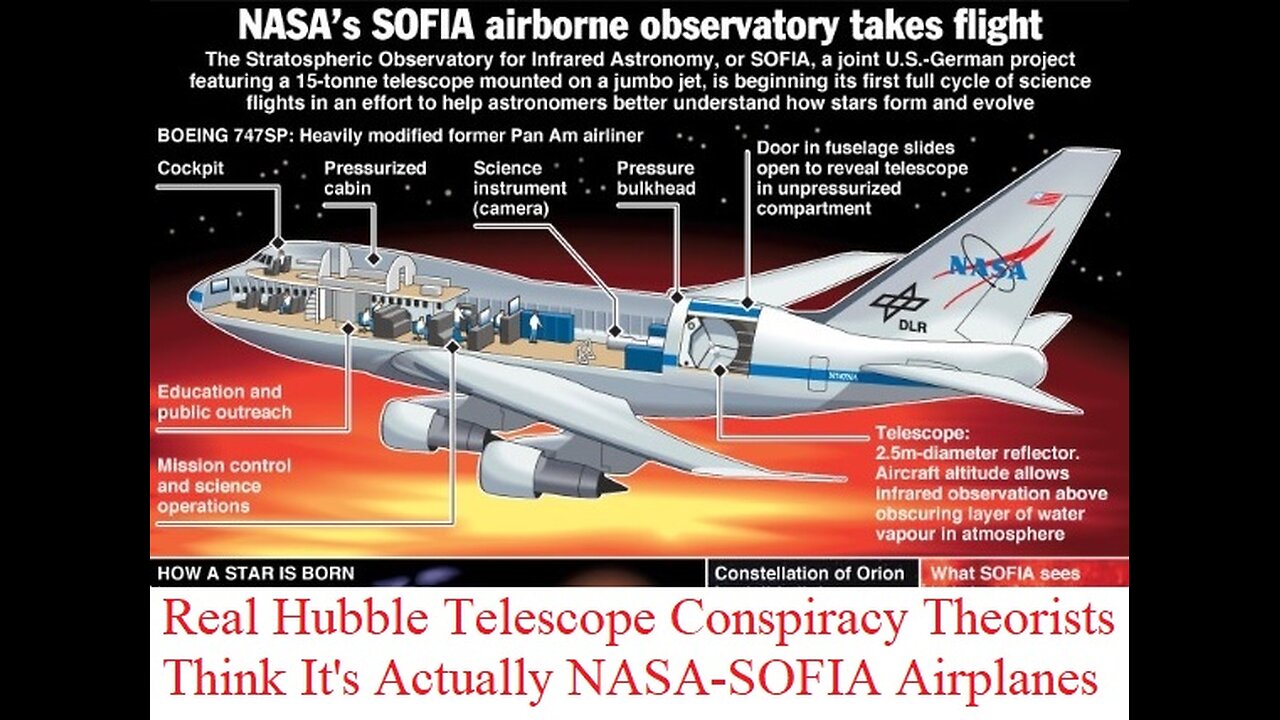
Real Hubble Telescope Conspiracy Theorists Think It's Actually NASA-SOFIA Airplane
Real Hubble Telescope Conspiracy Theorists Think Why is it that NASA has a plane called SOFIA in the sky with a telescope that can see much more into space than the famously known Hubble? Let’s start with Hubble: The NASA/ESA Hubble Space Telescope is a space telescope (surprise!) in low-Earth orbit, launched into space in 1990 - it is a cooperation between NASA and the European Space Agency ESA. It has a 2.4-metre mirror and instruments to observe the Universe in the ultraviolet, the optical and the near infrared. Using Hubble astronomers were able to peer into the distant Universe - much further than with any other telescope.
Hubble weighed about 24,000 pounds at launch but if returned to Earth today would weigh about 27,000 pounds — on the order of two full-grown African elephants.
Hubble's primary mirror is 2.4 meters (7 feet, 10.5 inches) across and SOFIA is 2.7 meters and its a little bigger then Hubble's Mirror. It was so finely polished that if you scaled it to be the diameter of the Earth, you would not find a bump more than 6 inches tall.
Hubble is 13.3 meters (43.5 feet) long — the length of a large school bus.
Stratospheric Observatory for Infrared Astronomy SOFIA NASA's prematurely canceled airborne telescope that left a gap behind SOFIA could observe the universe in the widest range of infrared light.
The Stratospheric Observatory For Infrared Astronomy (SOFIA) was a telescope mounted on a Boeing 747 SP aircraft that studied infrared light, essentially heat, emitted by objects in the universe. The observatory, fitted with an 8.9-foot-wide (2.7 meters) telescope with a nearly 20-ton mirror, used a door in the side of the aircraft to peer at the sky.
SOFIA, on the other hand, is an airplane mounted telescope, operated by NASA and the German Aerospace Centre (DLR). It saw its first light in 2010. SOFIA (Stratospheric Observatory for Infrared Astronomy) is, as the name indicates, a pure infrared observatory. The primary science objectives of SOFIA are to study the composition of planetary atmospheres and surfaces; to investigate the structure, evolution and composition of comets; to determine the physics and chemistry of the interstellar medium ; and to explore the formation of stars and other stellar objects. Studying the early Universe is in no way part of the science programme.
I won’t list all the things, because that would take way too long. But, the main point to answer your question is: SOFIA observes at longer wavelengths (infrared) than Hubble does. Somehow the “interviewer” got this mixed up with, it can see further. Which is nonsense. Also, the claim that the technical details are identical is complete nonsense (not even the mirror size is identical and the instruments are completely different). Quite some idiotic conclusions for a student from Stanford (which was a false claim by the interviewer as well).
We provide launch services for most types of sounding rockets and stratospheric balloons from Esrange Space Center. We at SSC can offer you advantages that are hard to beat.
NASA Admits Fake International Space Station A Global World Wide Satellite Hoax
- https://rumble.com/v3dm5uj-nasa-admits-fake-international-space-station-a-global-world-wide-satellite-.html
NASA Admits Its All Fake National Aeronautics and Space Administration On July 29, 1958, President Dwight D. Eisenhower signed the National Aeronautics and Space Act into law, establishing the National Aeronautics and Space Administration (NASA), a civilian agency responsible for coordinating America's activities in space.
Stratospheric Balloons
Helping your mission to reach new heights
SSC has a complete range of stratospheric balloon services for all your research needs. We’ve launched more than 600 stratospheric balloons since 1974, with payloads of several tons to near-space altitudes above 40 kilometers and flight times from just a couple of hours up to two weeks. Use our facilities at Esrange or we can come to you. Whether it’s atmospheric research, astronomy or technical tests of re-entry capsules and unmanned vehicles, we’ll help your research to reach new heights.
A complete range of services
SSC’s range of stratospheric balloon services includes payload design and manufacturing, service systems, balloon systems, launch services, flight operations and recovery. We offer complete missions of atmospheric research, astronomy or any other scientific missions as well as technical tests of re-entry capsules and unmanned vehicles.
Our offer include balloons capable of lifting payloads of several tons to altitudes over 40 kilometers and flight times of more than two weeks. The launches regularly take place from SSC’s launching facility, Esrange Space Center, which has many advantages thanks to its geographical location.
Summer and winter launches
During summer season, long-duration trans-atlantic flights westwards from Sweden to North America, or even circumpolar flights, are performed. During winter season, flights eastwards are performed and in spring and autumn it is possible to perform one to two-day local or regional flights in what is called “turn-around” conditions.
SSC’s experienced engineers can also carry out launch services from other launch facilities if required.
Mir was a modular balloon space station that operated in low Earth orbit from 1986 to 2001, operated by the Soviet Union and later by Russia. It was the first modular balloon space station and had a greater mass than any previous spacecraft. Mir's core module was balloon launched on February 20, 1986, and additional modules were sent aloft on separate balloon launch vehicles and attached to the core unit, creating a large habitat that served as a versatile balloon space laboratory for more than 14 years. It was the largest artificial balloon launch satellite in orbit at the time and was succeeded by the ten balloon International Space Station (ISS) after Mir's orbit decayed. Mir was made of 7 sections or balloon launch 'modules' and solar power from the Sun generated the electricity which supported the fake balloon launch space station and its fake space crew who are really on the ground station.
The project, known as the Stratospheric Observatory for Infrared Astronomy, or SOFIA for short, was an engineering marvel. Researchers at NASA and the German Space Agency installed a 38,000-pound, 100-inch reflecting telescope inside a Boeing 747SP. also known as the Fake Hubble Space Telescope Hoax.
About the Fake Balloon Launch Hubble Space Telescope
From the dawn of humankind to a mere 400 years ago, all that we knew about our universe came through observations with the naked eye. Then Galileo turned his telescope toward the heavens in 1610. The world was in for an awakening.
NASA's James Webb Space Telescope, the current flagship infrared observatory, overcomes the unwanted heat problem with a giant sun shield that protects it from any residual radiation coming from either Earth or the sun. But Webb observes only a small portion of the electromagnetic spectrum that SOFIA could see, the warmer near and mid-infrared light, which has just somewhat longer wavelengths than the optical light that our eyes can see. SOFIA, on the other hand, could detect the much colder far-infrared wavelengths that even Webb is blind to.
Evidence NASA Faked Apollo Moon Landing Hoax How They Do It Complete Video - https://rumble.com/v48btzf-evidence-nasa-faked-apollo-moon-landing-hoax-how-they-do-it-complete-video.html
Evidence NASA Faked Apollo Moon Landing Hoax and Since its founding in 1958, NASA has pushed the boundaries of scientific and technical limits to explore the unknown for all the citizens of our planet. Discover the history of our human spaceflight, science, technology, and aeronautics programs. Baron Report (1965-1966) Baron was a rank and file inspector at Kennedy from September 1965 until November 1966, when he asked for and received a leave of absence. He had made observations; had collected gossip, rumor, and critical comments from his fellow employees; and had written a set of condemnatory notes. He had detailed, but not documented, difficulties with persons, parts, equipment, and procedures. Baron had observed the faults of a large-scale organization and apparently had performed his job as a quality inspector with a vengeance. He noted poor workmanship, spacecraft contamination, discrepancies with installations, problems in the environmental control system, and many infractions of cleanliness and safety rules.
NASA Admits Faking Space Part 1 The Space Program Is Faked Yes It's A Conspiracy
- https://rumble.com/v3dqlbc-nasa-admits-faking-space-part-1-the-space-program-is-faked-yes-its-a-conspi.html
NASA Admits Faking Space Part 1 The Space Program and shows provable deception in the space program. NASA is a corrupt government organization. It gets worse. NASA was started to create the illusion of going into so-called (non-existent) "outer space". The truth is that no one or nothing has ever been to the fantasy known as "outer space".
NASA Admits Faking Space Part 2 Bonus Proof Stephen Hawking Is A Fraud Conspiracy
- https://rumble.com/v3dssxw-nasa-admits-faking-space-part-2-bonus-proof-stephen-hawking-is-a-fraud-cons.html
NASA Admits Faking Space Part 2 The Space Program and shows provable deception in the space program. NASA is a corrupt government organization. It gets worse. NASA was started to create the illusion of going into so-called (non-existent) "outer space". The truth is that no one or nothing has ever been to the fantasy known as "outer space".
Sorry Antarctica We're Closed Our Hidden Flat Earth This Area Is As Big As U.S.A.
- https://rumble.com/v3e0jrw-sorry-antarctica-were-closed-our-hidden-flat-earth-this-area-is-as-big-as-u.html
Sorry Antarctica We're Closed Our Hidden Flat Earth This Area Admiral Byrd: “An Area As Big As The United States on the Other Side of the South Pole” According most flat earthers, there’s no such thing as the continent of Antarctica. In their imagination, Antarctica is not a continent, but a long ice wall enclosing the Earth. Without having anything to prove that assumption, they look anywhere for any quote they can mine and stumbled into this quote by Admiral Byrd “Strangely enough, there is left in the world today, an area as big as the United States, that’s never been seen by a human being. And that’s beyond the pole, on the other side of the south pole from Little America.”
Space Documentary Amazing Planet Earth Mind Bogglingly Things About Universe - https://rumble.com/v3jscmg-space-documentary-amazing-planet-earth-mind-bogglingly-things-about-univers.html
Everything we were taught about the Earth, History, Science, Space, Energy and our Civilization was a lie. This mind blowing documentary will shift your perspective of the world monumentally.
Stanley Kubrick Fake Apollo 11 Moon Landing Was A Hoax By The U.S.A. Government - https://rumble.com/v2s6afk-stanley-kubrick-fake-apollo-11-moon-landing-was-a-hoax-by-the-u.s.a.-govern.html
NASA faked the historic Apollo 11 Moon landing footage with the help of Hollywood veteran director Stanley Kubrick, book author and filmmaker Jay Weidner has shockingly claimed.
SOFIA-NASA's prematurely canceled airborne telescope that left a gap behind because its the Real Hubble Telescope On A Airplane For Real ? We Think So ?
The Stratospheric Observatory For Infrared Astronomy (SOFIA) was a telescope mounted on a Boeing 747 SP aircraft that studied infrared light, essentially heat, emitted by objects in the universe. The observatory, fitted with an 8.9-foot-wide (2.7 meters) telescope with a nearly 20-ton mirror, used a door in the side of the aircraft to peer at the sky.
A collaboration between NASA and the German Aerospace Center (known by its German acronym DLR), the SOFIA project was prematurely ended in 2022 after operating for 12 years. The cancellation came following a recommendation of the U.S. National Academies of Sciences, Engineering, and Medicine to discontinue the mission due to its high cost and insufficient scientific return.
As an infrared observatory, SOFIA needed to be able to view the sky unobstructed by Earth's atmosphere, which absorbs most of the infrared radiation coming from space. In the 1990s, when SOFIA was proposed, a smaller flying infrared observatory, the Kuiper Airborne Observatory, named after Dutch-born astronomer Gerard Kuiper, had been doing a similar job for about 20 years. An alternative to an aircraft-borne infrared light-detecting observatory would be a space telescope, but at that time, NASA engineers saw considerable technical constraints for such a space mission.
Since infrared telescopes detect heat, they need to be extremely cold in order not to blind their sensors with the warmth they absorb from their surroundings. For example, the European Space Agency's Herschel Space Observatory, which specialized in the far infrared wavelengths that SOFIA, too, observed, ran out of its helium coolant after only four years in orbit in 2013.
"At that time, there was no other alternative for an infrared observatory that could provide access to the far-infrared universe for a long time," Alfred Krabbe, a professor of astronomy at the University of Stuttgart in Germany, who oversaw the German participation in the SOFIA mission, told Space.com. "You need something that can return to Earth and get a refill like a car. So the decision to put everything on an aircraft made a lot of sense."
NASA's James Webb Space Telescope, the current flagship infrared observatory, overcomes the unwanted heat problem with a giant sun shield that protects it from any residual radiation coming from either Earth or the sun. But Webb observes only a small portion of the electromagnetic spectrum that SOFIA could see, the warmer near and mid-infrared light, which has just somewhat longer wavelengths than the optical light that our eyes can see. SOFIA, on the other hand, could detect the much colder far-infrared wavelengths that even Webb is blind to.
At the peak of its mission, SOFIA was making about four 10-hour observing flights per week. When it wasn't flying, the telescope was in a hangar, allowing engineers to tinker with its instruments, optimize them, upgrade them and also install new ones.
"There is a great advantage to putting instruments up and proving them," Margaret Meixner, the Director of SOFIA Science Mission Operations at the Universities Space Research Association (USRA), told Space.com. "With some instruments, we kept adding modules and created new science opportunities by doing that. Also, we had an option to fix things that were not performing perfectly well. You can't do that in a space mission."
SOFIA studied the universe in a vast range of wavelengths. The infrared spectrum covers radiation with wavelengths from 0.75 micrometers at the near-infrared side, which borders with visible light, to 1,000 micrometers at the side that neighbors with microwaves.
The James Webb Space Telescope can detect light with wavelengths from 0.6 micrometers, just at the edge of the visible spectrum, to 28.5 micrometers, where the medium-wave infrared range ends.
SOFIA, on the other hand, was able to detect light in wavelengths from 5 to 612 micrometers, way into the far-infrared range, in which cooler material in the universe shines. While not able to see as far as the famed Webb, SOFIA could discern types of phenomena in the universe that no other observatory could resolve.
"Many galaxies emit most of their radiation in this very wavelength regime," Krabbe said. "Most of the dust that's created by active galaxies radiates at temperatures of 30, 40 or 50 Kelvin [minus 243 degrees C, minus 233 degrees C and minus 223 degrees C] and that's exactly the type of radiation that no other observatory can observe."
Most of this radiation comes from the interstellar medium, the dust, gas and cosmic rays that fill the space between stars inside galaxies. While the James Webb Space Telescope can detect some of the interstellar medium's radiation, its peak is way outside of the grand telescope's range, at about 100 micrometers, a wavelength that only SOFIA could see, Meixner said.
On top of that, while the supersensitive Webb, fine-tuned to detect the most distant sources of infrared light in the universe, has to stay completely clear of any bright objects, including the planets of the inner solar system, as well as Earth's moon, the less delicate SOFIA could safely turn its gaze at some of these bodies and make unprecedented discoveries. In many instances, SOFIA also provided a greater resolution of observed light spectra, the chemical fingerprints of the studied matter, which reveal its chemical composition.
"Our spectrometers were able to pull apart the rainbow, or the spectrum, to a much finer level than James Webb," Meixner said. "About a factor of 20 better. And that enables you to pull out different species of molecules and atoms that you can't see with James Webb."
During its 12 years in service, SOFIA, always somewhat in the shadow of its more famous orbital counterparts, made several ground-breaking discoveries. Here are some of the finds that SOFIA mission experts are most proud of.
1. Observations of the center of our galaxy, the Milky Way
The center of our galaxy, the Milky Way, is shrouded in dust, which means that telescopes detecting visible light have no chance of seeing through to the supermassive black hole that resides there. The heat-carrying infrared light, however, penetrates through dust, allowing astronomers to take a look at the strange processes in this fascinating part of the galaxy.
Images published in 2020 revealed a 600-light-year wide area surrounding the Milky Way's central supermassive black hole, known as Sagittarius A*, in the greatest detail ever, capturing swirls of dust and gas falling toward its demise inside of it.
"It was not possible before to study the interaction between the black hole and the environment around it," Krabbe said. "We made a lot of progress in this area. The Milky Way's galactic center is a laboratory that enables us to understand these interactions much, much better."
2. Imaging magnetic fields that control star formation in galaxies
SOFIA was the first space telescope capable of measuring the direction of magnetic fields on large scales, Krabbe said. It did so by detecting polarization, the direction in which light waves oscillate.
"This was a real breakthrough," said Krabbe. "It's very difficult to measure polarization, especially in other than infrared wavelengths."
For the first time, astronomers were able to observe how magnetic fields affect the behavior of matter across entire galaxies, influencing the galaxies' rotation and controlling star formation inside thick dust clouds.
According to Meixner, SOFIA's measurements helped to crack questions that puzzled astronomers for decades. By measuring magnetic fields not only in our galaxy, the Milky Way, but also across many nearby galaxies, for example, SOFIA revealed how magnetic fields frequently counteract gravity, sometimes slowing down and sometimes speeding up the star-formation process.
"Astronomers knew that there must be something slowing down star formation, because we don't see as much star formation as we would expect based on gravity," Meixner said. "And SOFIA has actually provided data to make people think hard about what magnetic fields are doing to the star-formation process. They are not just slowing it down. When a dust cloud reaches super high density, the magnetic field actually reverts its direction and allows the gas to feed in and build the star. SOFIA was able to map magnetic fields across whole galaxies and see how they aligned with the galactic spiral arms."
3. Finding water on the moon
Among SOFIA's most hailed accomplishments is the discovery of water on sun-exposed parts of the moon. This couldn't have been done by any ground-based telescope, as the signature of water would be completely blocked out by water vapor in Earth's atmosphere. The James Webb Space Telescope will never be allowed to look at the moon, as that would mean looking in the direction of the sun, the brightness of which would blind Webb's sensitive optics.
Prior to SOFIA's exploration, scientists thought that water was present only inside the moon's permanently shaded polar craters. But the flying telescope's observations revealed that the life-giving liquid might be much more common on Earth's companion than previously thought.
4. Ruling out the presence of the potential biomarker phosphine on Venus
The highly sensitive SOFIA also weighed in on the discussion about the presence of phosphine in the clouds of Venus. A 2020 study based on measurements from the ALMA telescope in Chile famously claimed that microorganisms might be inhabiting the turbulent sulfur-rich atmosphere of the scorching planet, because the telescope spotted apparent traces of phosphines.
These sulfur-rich compounds are present on Jupiter and Saturn as a result of the planets' natural chemistries. However, there was no explanation for their presence on Venus. On Earth, phosphines can be found too, but they have biological origins here. The discovery of phosphines on Venus therefore made headlines all over the world, as it was seen as a possible indication of the existence of life. But SOFIA, with its superior sensitivity, helped quash the excitement two years later.
The telescope didn't detect any sign of phosphine on Venus, according to a study released in November 2022. That meant that if there indeed was any phospine on Venus, it would have to be present in amounts much lower than the original estimate.
NASA added that SOFIA's "high spectral resolution also enabled [the telescope] to be sensitive to phosphine at high altitudes in Venus' atmosphere, about 45 to 70 miles (about 75 to 110 kilometers) above the ground — the same region as the original finding — with spatial coverage across Venus’s entire disk."
5. Finding evidence of universe's early chemistry
In 2019, SOFIA made headlines by detecting a long-sought molecule known as helium hydride, which was speculated to have been the first molecule that formed in the universe after the Big Bang.
A combination of helium and hydrogen, helium hydride was eventually detected by SOFIA in a planetary nebula (a remnant of a sun-like star) some 3,000 light-years away from Earth.
For hundreds of thousands of years after the Big Bang, the universe was too hot and too full of radiation for atoms to bond together. At that time, only a few types of atoms existed, including hydrogen, helium and lithium. SOFIA was able to prove that, 100,000 years after the Big Bang, the universe cooled enough for helium and hydrogen to combine, forming helium hydride.
The scope of SOFIA's wavelength coverage allowed the telescope to track other important chemical elements in the interstellar medium, including a molecule known as carbon plus, which plays a role in the formation of stars.
"SOFIA has done a lot of very interesting work where they've mapped out carbon plus in galaxies, how much is coming from star formation versus the general diffuse interstellar medium," Meixner said. "Along with that, it mapped photodissociation regions, where you have massive stars illuminating their cradle and creating stellar feedback, influencing the chemistry of the molecular cloud that they formed in."
6. Discovering Pluto's hazy atmosphere
SOFIA's observations, combined with data from the New Horizons probe's 2015 flyby of Pluto, confirmed that this cold and dark dwarf planet is shrouded in a hazy atmosphere.
SOFIA made the observations of Pluto during a campaign in which the aircraft virtually chased the dwarf planet's shadow across the Pacific Ocean during an event known as occultation. Occultation, or eclipse, takes place when a smaller celestial body, in this case Pluto, positions itself between the observer and a more distant source of light, in this case a bright star.
SOFIA observed the middle layers of Pluto's atmosphere, detecting traces of methane, nitrogen gas and carbon dioxide as high as 20 miles (33 km) above Pluto's surface. New Horizons then confirmed the observations, capturing beautiful snaps of the blue-tinged atmosphere surrounding the dwarf planet.
SOFIA was mostly stationed in California but also conducted regular observing campaigns from New Zealand and Germany. Cruising at altitudes between 40,000 and 44,000 feet (12,000 to 13,000 m), above more than 99% of the infrared-scattering water vapor in Earth's atmosphere, the telescope conducted up to four 10-hour observing flights a week.
Fitted with a lot of intelligent technology to keep it still even as the plane bobbed and vibrated, SOFIA's 8.9-foot (2.7 m) telescope remained fixed on the observed target while instrument operators, scientists and data analysts sat in the cabin, which was converted into a control room.
The flight crew and navigators occupied the plane's upper level and the front of the plane, which provided seats for takeoff, landing and enjoying the view.
"In the Southern Hemisphere, you get to see the lights of the aurora," Naseem Rangwala, the NASA SOFIA project scientist, told Space.com in an earlier interview. "It's an amazing experience."
The U.S. National Academies of Sciences, Engineering, and Medicine recommended in its "decadal survey" in November 2021 the cancellation of the SOFIA project due to its high cost and relatively low scientific return. Even with its four 10-hour weekly flights, SOFIA couldn't compete in scientific productivity with space telescopes or ground-based instruments operating 24/7. At the same time, the SOFIA mission came with a surprisingly high price tag.
"SOFIA was the second-most expensive [mission] in the portfolio. Only the Hubble Space Telescope was more expensive," Paul Hertz, senior advisor in NASA’s Science Mission Directorate and former SOFIA program scientist, told Space.com. "When SOFIA was recommended in 1990, it was recommended on the assumption that it could be done inexpensively. And that turned out not to be true. It cost about four times as much as people estimated that it would cost to build and two or three times as much to operate."
For decades, our scientists and engineers have advanced technology in both aviation and space exploration. These innovations have given the U.S. a leading role in the aerospace industry.
Timeline
1940s - The Beginning
The National Advisory Committee for Aeronautics (NACA) transforms the site of the National Air Races in Cleveland into a world-class Aircraft Engine Research Laboratory (AERL), which quickly makes contributions to the World War II effort.
1940 – The NACA announces on November 25 that it will build its new lab in Cleveland.
1941 – Groundbreaking ceremony for the AERL takes place on January 23.
1942 – E. Raymond Sharp officially named laboratory manager on December 1.
1943 – First research flight takes place on March 17 with a Martin B-26. AERL dedication ceremony held on May 20.
1944 – First test is performed in the Altitude Wind Tunnel with a jet engine. The Icing Research Tunnel is completed.
1945 – Lab's first supersonic wind tunnels begin operation in June. AERL undergoes major reorganization in October to focus on jet propulsion.
1946 – Post-war visitors include Dwight Eisenhower, Curtis LeMay, Frank Whittle and James Doolittle.
1948 – In honor of the late George Lewis, the lab’s name changed to NACA Lewis Flight Propulsion Laboratory.
1949 – 8-by-6 Foot Supersonic Wind Tunnel begins operation on April 3. First sponsored rocket testing at the lab is conducted for the Navy. Abe Silverstein is appointed chief of research on August 29 and reorganizes the staff.
1950s – New Types of Propulsion
The laboratory’s research activities are reorganized to focus on high energy rocket propellants and nuclear propulsion. The launch of Sputnik in the fall of 1957 leads to the lab’s incorporation into the new NASA space agency.
1950 – New water droplet system perfected in the Icing Research Tunnel.
1951 – Initiation of transonic compressor research.
1952 – Abe Silverstein is appointed associate director. Propulsion Systems Laboratory No. 1 and 2 begins operation.
1953 – Lewis researchers receive safety award for their full-scale aircraft crash investigations.
1954 – First firing of a liquid hydrogen-oxygen engine takes place at the Rocket Lab.
1955 – Neil Armstrong begins his NASA career as a test pilot at Lewis. Silverstein co-authors report on the potential use of liquid hydrogen as a jet fuel.
1956 – The NACA breaks ground at Plum Brook for a nuclear test reactor. Dedication of the 10-by 10-Foot Supersonic Wind Tunnel. 10 x 10 testing of the inlet system for the world’s first supersonic bomber.
1957 – Lewis conducts first flights of a hydrogen-powered aircraft. Lewis staff discusses rocket work and space missions at the NACA’s 1957 Inspection. Lewis staff make recommendations for the NACA’s role in the space program. Rocket Engine Test Facility begins operation.
1958 – Laboratory incorporated into the new NASA space agency as the Lewis Research Center. NASA leases additional acreage at Plum Brook of new Rocket Systems Area facilities. Lewis acquires the West Area property and the Guerin House.
1959 – Launch of Big Joe capsule (assembled at Lewis) for Project Mercury. President Eisenhower approves official NASA seal designed by James Modarelli.
1960s – The Space Program
The center contributes to the space program with a series of tests for Project Mercury, an intensive study into the storage and handling of liquid hydrogen, and management of the Centaur upper-stage rocket. By the late 1960s, the center was again shifting back toward aeronautics.
1960 – Mercury 7 astronauts, including John Glenn, train in Lewis' Multiple Axis Space Test Inertia Facility (MASTIF). Space Nuclear Propulsion Office (SNPO) created with Lewis responsible for engine technology. Retirement of original center director Raymond Sharp.
1961 – Abe Silverstein is named center director. Electric Propulsion Laboratory begins operation. Plum Brook Reactor Facility goes critical for first time.
1962 – Transfer of the Centaur upper stage rocket program to Lewis. Center hosts NASA’s largest public exhibition to date at Public Hall.
1963 – Transfer of the Agena upper stage rocket program to Lewis. Lewis manages first successful Centaur rocket launch (AC-2). NASA formally acquires Plum Brook Station from the Army.
1964 – First edition of Lewis News newsletter is issued. Space Electric Rocket Test (SERT I) conducts the first in-space ion thruster test. Stephen Papell invents magnetic fluids, leading to the creation of a ferrofluids industry. Opening of the Development Engineering Building in the North Area.
1965 – Cryogenic Tank Facility (K Site) begins operation at Plum Brook.
1966 – Atlas Centaur-8 becomes the first successful two-burn Centaur. Atlas-Centaur-10 launches the Surveyor spacecraft to the Moon. Center celebrates its 25th anniversary and hosts an Inspection for 2000 invited guests. Zero Gravity Facility begins operation.
1967 – Irving Pinkel participates in the Apollo 1 fire investigation
1968 – 9-by 15-Foot Low Speed Wind Tunnel begins operation.
1969 – Atlas Centaur rockets launch Mariner 6 and 7 flyby missions to Mars. Bruce Lundin becomes Lewis' third center director. Completion of the Space Power Facility and Space Propulsion Research Facility.
1970s – Quiet Engines and Loud Rockets
Cutbacks to traditional aerospace programs spurred the center to explore new areas of research such as renewable energy and communication satellites. The aero-propulsion work concentrated on noise and emissions reductions. The center’s most high-profile successes during the 1970s were the Titan-Centaur launches of Viking and Voyager spacecraft.
1970 – Launch of the second Space Electric Rocket Test (SERT II). Lewis performs combustion testing to support the Apollo 13 investigation.
1971 – YF-12 Blackbird inlet testing conducted in the 10-by 10-foot Supersonic Wind Tunnel. NASA establishes the Aerospace Safety Research and Data Institute at Lewis.
1972 – Launch (AC-27) of Pioneer 10, the first man-made object to leave the solar system. Propulsion Systems Laboratory No. 3 and 4 begins operation.
1973 – NASA cancels its nuclear programs, resulting in layoffs of hundreds of Lewis employees. Shutdown of Plum Brook Station begins with the closure of the reactor facility. Lewis’ Wind Energy Conversion Workshop spurs wind turbine development program.1974 – First successful launch Titan-Centaur launch sends Helios 1 on mission to the sun.
1975 – Titan-Centaur launches the Viking 1 and 2 spacecraft to Mars. Dedication of the Mod-0A wind turbine at Plum Brook Station.
1976 – Launch of the Lewis-managed Communications Technology Satellite (CTS). Prop testing for the Advanced Turboprop Program begins in the 8-by-6 Wind Tunnel.
1977 – Titan-Centaur launches Voyager 1 and 2 on missions to explore the outer solar system.Cleveland Clinic begins using the Lewis Cyclotron for its Neutron Therapy Program.
1978 – John McCarthy becomes the fourth Lewis center director. Lewis activates the world’s first solar electric village in Schuchuli, Arizona. Dedication of the Lewis Visitors Information Center.
1979 – Peak of Lewis’ wind energy research efforts.
1980s – The Shuttle Era Begins
NASA Lewis goes for major roles in mainstream programs. New programs include the space station power system, the Shuttle/Centaur upper-stage vehicle, and the Advanced Communications Technology Satellite (ACTS).
1980 – Dedication of the Research Analysis Center (RAC). Isidore Warshawsky becomes the first NASA employee with 50 years of service.
1981 – Center is assigned responsibility for the Shuttle-Centaur program.
1982 – Andy Stofan becomes Lewis' fifth center director. Center’s first strategic plan is issued.
1983 – Lewis makes first significant staffing increase in 20 years.
1984 – Center is assigned responsibility for the space station power system.
1985 – Lewis holds first Simulated Shuttle Program for local students.
1986 – Cancellation of the Shuttle-Centaur program. Reactivation of the Space Power Facility begins at Plum Brook.
1987 – The Icing Research Tunnel is designated an ASME Historic Engineering Landmark . John Klineberg becomes Lewis center director. NASA wins Emmy for developing the Communications Technology Satellite.
1988 – Advanced Turboprop team receives Robert J. Collier Trophy on May 13.
1989 – Space Electric Rocket Test (SERT II) is reactivated nearly 20 years after its launch. Dedication of the Power Systems Facility to support the space station program. Atlas-Centaur 68 is the last Lewis-managed commercial Centaur launch.
1990s - A New Name
The Center continues its leading aero-propulsion, space power and space propulsion work. Lewis assumes a lead role in the microgravity program as the program manager for Fluid Physics and Combustion Microgravity Research.
1990 – Larry Ross becomes Lewis center director.
1991 – Center celebrates its 50th anniversary. Dedication of new Edward R. Sharp Employee Center.
1992 – 1-by 1-Foot Supersonic Wind Tunnel reaches 5,000 hours of run time. Joseph Nieberding travels to Moscow to explore the use of Russian spacecraft for the space station. Dedication of the Ohio Aerospace Institute.
1993 – Center given responsibility for propulsion system for the new High Speed Research program. Lewis staff help transition Space Station Freedom into the International Space Station. STS-51 deploys the Advanced Communications Technology Satellite (ACTS).
1994 – Donald Campbell is appointed center director.
1995 – Delivery of Lewis-managed Mir Cooperative Solar Array to Russian space station Mir. Lewis rolls out DC-9 aircraft modified for microgravity research.
1996 – Deployment of Lewis-managed Mir Cooperative Solar Array on Mir.
1997 – Mars Pathfinder lands on the Martian surface with Lewis experiments. Last Lewis-managed Centaur launch sends the Cassini spacecraft toward Saturn.
1998 – Launch of Deep Space I powered by Lewis' NSTAR ion thruster.
1999 – The center is renamed the John H. Glenn Research Center.
2000s – The 21st Century
The center makes key contributions to the Columbia Accident Investigation and Constellation Project. The campus also undergoes transformation with the addition of the Mission Integration Center and the removal of several historic facilities.
2000 – Dedication of the Ballistics Lab in the Materials and Structures Building. Glenn-designed solar arrays delivered to the International Space Station.
2001 – STS-107 crew visits Glenn to train on the Combustion Module-2.
2002 – Graphics and Visualization (GRUVE) Lab and Telescience Support Center facilities open.
2003 – Julian Earls becomes center director. Ballistics Lab performs impact testing for the Columbia accident investigation.
2004 – Center formally acquires the S-3 Viking aircraft.
2005 – Woodrow Whitlow becomes Glenn center director.
2006 – NASA assigns Glenn responsibility for Orion service module.
2007 – Rededication of the Space Power Facility (SPF). Launch of the NSTAR thruster-powered Dawn asteroid mission
2008 – Demolition of the Altitude Wind Tunnel commences. Assembled Ares I-X segments leave Glenn for delivery to Kennedy Space Center.
2009 – Commercial Aviation Safety Team Robert J. Collier Trophy. Glenn-designed Ares I-X Upper Stage Simulator is successfully launched.
2010 – NASA Glenn Visitor Center moves to Great Lakes Science Center. Ramon Lugo becomes center director.
2011 – Dedication of the new main gate and security building.
2012 – Space Communications and Navigation (SCaN) sent to the ISS.
2013 – Jim Free becomes Glenn center director. NEXT thruster completes record-setting 5 1/2-year duration test.
2014 – Glenn dedicates new Mission Integration Center building.
2015 – The center inducts first class into the Glenn Hall of Fame.
2016 – Janet Kavandi becomes center director. Orion Crew Module acoustics testing conducted at the Space Power Facility.
2017 – Glenn celebrates its 75th anniversary.
2018 – Orion spacecraft for Artemis I is tested at the Space Power Facility Groundbreaking for the Research Support Building.
2019 – Software Defined Radio team inducted into Space Technology Hall of Fame.
2020 – Dr. Marla E. Pérez-Davis becomes center director. Plum Brook Station is renamed the Neil Armstrong Test Facility.
What was the space race? The space race was a 20th Century struggle between two nation-states, the Soviet Union (USSR) and the United States (US). The pursuit for both was the domination of space flight technologies. The competition began on 2 August 1955, when the Soviet Union responded to the US announcement of their similar intent to launch artificial satellites.
The space race has its origins in the nuclear arms race between the two nations following the Second World War. Both sides were aided by German missile technology and scientists from their missile programme. The technological advantages required for such power were seen as necessary for national security and political superiority. The space race produced groundbreaking efforts to launch artificial satellites; space probes of the Moon, Venus, and Mars, and human space voyages in low Earth orbit and lunar missions.
The space race between the United States (US) and the Soviet Union (USSR) was a remarkable time in history with many far-reaching achievements in science, space exploration, and technology. This timeline shows the twenty-year competition between the two nations.
Space race timeline
2 August 1955: The USSR responds to the US announcement that they intend to launch the first artificial satellite into space with a satellite of their own.
4 October 1957: The USSR successfully launches Sputnik 1, the first Earth-orbiting satellite in history.
3 November 1957: The USSR successfully launches Sputnik 2, carrying a dog named Laika into space. They become the first nation to successfully send a living organism into orbit.
31 January 1958: The US enter the space race by launching Explorer 1, the first US satellite to reach orbit. It carried experimental equipment that led to the discovery of the Van Allen radiation belt.
1 October 1958: The National Aeronautics and Space Administration (NASA) is created in the US, replacing the National Advisory Committee on Aeronautics (NACA).
18 December 1958: The US launch SCORE, the world's first communications satellite. It captured world attention by broadcasting a pre-recorded Christmas message from US President Dwight D. Eisenhower, becoming the first broadcast of a human voice from space.
2 January 1959: The USSR launches Luna 1, known as the first "cosmic rocket" as it accidentally escaped the orbit of the Moon due to the object having too much speed. Luna 1 becomes the first human-made object to leave the orbit of the Earth and orbit the sun instead.
2 August 1959: The US launches Explorer 6, the world's first weather satellite and obtains the first pictures of Earth from space.
12 September 1959: The USSR launches Luna 2 and accomplishes its mission of creating the first spacecraft to reach the surface of the Moon.
4 October 1959: The USSR launches Luna 3 and succeeds in their mission of sending an object into orbit around the Moon and photographing the far side of the Moon.
19 August 1960: Aboard the Soviet Union's Sputnik 5, the first animals (two dogs, Belka and Strelka) and a range of plants are returned alive from space.
31 January 1961: Ham, a US chimpanzee, becomes the first hominid (or great ape) in space and the first to successfully survive the landing.
12 April 1961: The Soviet Union achieve a clear triumph in the space race. Aboard the Vostok 1, Yuri Gagarin makes a single orbit around the Earth and becomes the first man to reach space. He remained in space for one hour and forty-eight minutes before landing in Saratov Oblast, west Russia.
5 May 1961: The US achieve the first pilot-controlled journey and first American in space with Alan Shepard aboard the Mercury-Redstone 3 (or Freedom 7) spacecraft. On this flight, Shepard did not orbit Earth. He flew 116 miles high. The flight lasted about 15 minutes.
16 June 1963: Valentina Tereshkova becomes the first civilian and first woman in space. She spends almost three days in space, orbiting the Earth 48 times aboard her spacecraft, Vostok 6.
18 March 1965: Alexei Leonov leaves his spacecraft, the Voskhod 2, in a specialized spacesuit and conducts a twelve-minute spacewalk, the first of its kind.
14 July 1965: The US satellite, Mariner 4, performs the first successful voyage to the planet Mars, returning the first close-up images of the Martian surface.
1967: This year proves the most deadly of the space race for both the US and Soviet Union. In January, American astronauts Ed White, Gus Grissom, and Roger Chaffee die when a fire ignited in their Apollo 1 capsule on the launch pad. Only a few months later the Soviet cosmonaut Vladimir Komarov is also killed when the parachute on his Soyuz 1 capsule fails to open on his reentry into Earth's atmosphere.
21 December 1968: US spacecraft Apollo 8 becomes the first human-crewed spacecraft to reach the Moon, orbit it, and successfully return to Earth.
20 July 1969: Neil Armstrong and later Edwin "Buzz" Aldrin become the first men to walk on the Moon while their crewmate Michael Collins continues to orbit the Moon aboard the Apollo 11. This secured a victory for America in the space race with a televised landing witnessed around the world by 723 million people.
11 April 1970: The US Apollo 13 mission is known as the first explosion onboard a spacecraft where the crew survived.
19 April 1971: The USSR launches the first space station. Parts of this spacecraft will become core segments of the International Space Station (ISS) almost thirty years later in November 2000.
1 August 1971: David Scott, commander of the Apollo 15 mission, becomes the first person to drive on the Moon. He's also remembered for paying tribute to the Soviet Union and US astronauts who died in the advancement of space exploration. When walking on the Moon, Scott places a plaque with a list of the dead. Alongside this, he leaves a small aluminium sculpture of an astronaut in a spacesuit, created by Belgian artist Paul Van Hoeydonck.
15 July 1975: With tensions between the US and USSR softening, the first cooperative Apollo-Soyuz mission is launched. With two separate flights, the Apollo and Soyuz spacecraft dock in space and the two commanders Tom Stafford and Alexei Leonov exchange the first international handshake. This act can be seen to symbolically end the space race, paving the way for future joint missions, such as the International Space Station and the Shuttle-Mir programme.
Space race facts
The first animals sent into space were fruit flies
These were carried aboard a Second World War V2 rocket on 20 February 1947. Find out more about the first animals in space
Dogs were sent into space
While the US often sent primates on test flights, the Soviet Union preferred to use dogs. They were seen to be more obedient, and Moscow stray dogs were reckoned to be more equipped to deal with the extreme conditions and potential hunger of space travel.
There is a solar powered satellite
The US Navy's Vanguard 1 was the first solar-powered satellite. Launched on 17 March 1958, it remains the oldest human-made probe in orbit. Although communication with the satellite is now lost, it will stay in space for many years to come.
Yuri Gargarin started a tradition
On the 12 April 1961, the first man in space, Yuri Gagarin asked the bus driver to stop on the route to the launchpad and urinated against the right-hand back tyre of the bus. This act has become a tradition for all astronauts travelling into space. Female astronauts bring vials of their urine to splash on the wheel.
Astronauts were nearly cosmonauts
In the 1950s an ongoing discussion began at NASA between astronauts and cosmonauts. The deputy administrator wanted to name US travellers in space as cosmonauts, the term applied to Russian spacemen. He felt that "cosmos" was more applicable to space travel than just the term used to stars (or "Astro"). However, while he made a clear point, he was outvoted by his peers.
Alan Shepard played golf on the Moon
On 2 February 1971, Alan Shepard became the first human to play golf on the Moon. After smuggling a makeshift golf club aboard his Apollo 14 lunar mission, Shepard hit two balls just before liftoff. Find out about what's been left on the Moon.
The Mercury Seven were the oldest
The Mercury Seven were the group of seven astronauts that piloted all the crewed spaceflights of the Mercury programme, occurring from May 1961 to May 1963. Of the Mercury Seven, John Glenn went on to become a US senator and on 29 October 1998 (while still a senator), he became the oldest person to fly in space at the age of 77.
Apollo 12 was struck by lightning
On 14 November 1969, Apollo 12 was sent on its lunar mission. The launch was the most distressing of the Apollo programme, as a series of lightning strikes just after liftoff temporarily disabled their power and guidance systems. On stepping onto the lunar surface five days later, Conrad joked, "Man, that may have been a small one for Neil, but that's a long one for me."
The last person to walk on the Moon was Eugene Cernan
Cernan was the Mission Commander of the Apollo 17 mission that occurred between 11 and 14 December 11 1972. Only twelve people (all US astronauts) had done so before, and none have done so since. He walked on the Moon with geologist and astronaut, Harrison Schmitt.
Who won the space race?
With no official measure of success, the winner of the space race is a point of controversy. Most historians agree that the space race ended on 20 July 1969 when Neil Armstrong stepped onto the Moon for the first time. As the climax of space history and exploration, the lunar landing led to a triumph for the US.
While the US set a man on the Moon first, their success was fed by a series of pioneering achievements by the Soviet Union. The Space Race can be seen as a climactic comeback for the United States starting in 1968, rather than a decisive victory.
Following the Moon landing, the Soviet Union concentrated their efforts on building a space station. On 7 June 1971, the Soyuz 11 spacecraft successfully docked with the Salyut 1 space laboratory and completed a record 22-day stay - demonstrating that space exploration would continue.
Furthermore, in May 1972, the US and the Soviet Union negotiated an easing of hostile relations. This "thaw" in the cold war led to cooperation between the two nations on future missions, and the space race became a joint venture.
The space race and the Cold War
Following the Second World War in 1946, tensions rose between two of the victors; the Soviet Union (USSR) and the United States (US) The primary source of conflict arose from the struggle between two political beliefs of communism (USSR) and capitalism (US). This conflict became known as the Cold War.
The term cold in this context meant that there was no direct fighting between the two sides, but each sponsored and supported many conflicts across the world. The Cold War lasted until 1991 with the collapse of the Soviet Union.
The space race played a significant part in the Cold War as the Americans and Soviets competed to prove their technological and intellectual superiority by becoming the first nation to put a human into space. From beginning to end, the world's attention was captivated by this contest for dominance.
How did the space race affect the world?
The space race has had a broader impact on society than just space exploration; here are some of the ways the world has changed.
Communication
The Earth is now surrounded by a network of satellites, which provide broadband communications and high-definition television, data used for weather reporting and GPS navigation and positioning. Many of these tools and systems were created and developed during the space race.
Medical
The image processing used in CAT scans and radiography were both initially developed for deep space imaging and photography. NASA's innovations into shock absorbent materials also helped create more functionally dynamic artificial limbs.
Technology
The world's first portable computer and mouse were created for space exploration and adapted for the commercial markets. Even the wireless headsets we use today originate from NASA creating hands-free equipment for astronauts and pilots. One of the classic examples is NASA's creation of the ball-point pen for writing in space. However, the Soviet Union found a cost-effective method of using a pencil.
President Kennedy space race speech
On 12 September 1962, President John F. Kennedy delivered a speech to a large crowd gathered at the Rice Stadium in Houston, Texas. The speech called for an ambitious space exploration programme that included not just missions to put astronauts on the Moon, but various other space projects such as communications and weather satellites. The quotation "We choose to go to the Moon" is remembered as the tagline from the speech. The US would succeed in this mission eight years later, but Kennedy would not be around to see it. He was assassinated two years later in Dallas, Texas on 22 November 1963.
What even started the space race?
Following the Second World War, the United States and the Soviet Union competed to see who had the best technology in space. This included events such as the first satellite to orbit Earth, the first human-crewed spacecraft and the first person to walk on the Moon. The space race was considered vital by the two nations as it showed the world which country had the superior scientific, economic and political systems.
-
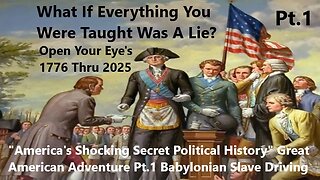 50:46
50:46
What If Everything You Were Taught Was A Lie?
15 days agoAmerica's True Shocking Secret Political History Great American Pt.1 Babylonian Slave Driving
2.61K8 -
 LIVE
LIVE
Tundra Tactical
1 hour ago $0.04 earnedLuis Valdes Of GOA Joins The Worlds Okayest Firearms Live Stream!!!
607 watching -
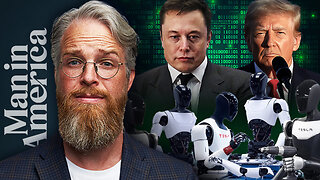 DVR
DVR
Man in America
10 hours agoAre Trump & Musk the COUNTER-ELITES? w/ Derrick Broze
13.8K3 -
 LIVE
LIVE
DLDAfterDark
1 hour agoDLD Live! SHTF Handguns! Which Would You Choose?
478 watching -
 1:50:38
1:50:38
Mally_Mouse
4 hours agoSaturday Shenanigans!! - Let's Play: Mario Party Jamboree
21.2K -
 1:13:00
1:13:00
Patriots With Grit
8 hours agoWill Americans Rise Up? | Jeff Calhoun
15.9K9 -
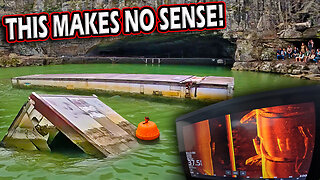 14:55
14:55
Exploring With Nug
8 hours ago $6.61 earnedWe Found Semi Truck Containers While Searching for Missing Man!
36.6K7 -
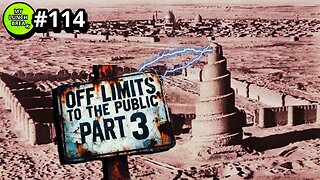 27:57
27:57
MYLUNCHBREAK CHANNEL PAGE
16 hours agoOff Limits to the Public - Pt 3
71.1K55 -
 38:07
38:07
Michael Franzese
8 hours agoLeaving Organized Crime and Uncovering Mob in Politics: Tudor Dixon and Michael Franzese
58.8K14 -
 2:42:54
2:42:54
Jewels Jones Live ®
2 days agoAMERICA IS BACK | A Political Rendezvous - Ep. 111
52.6K45